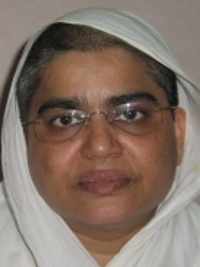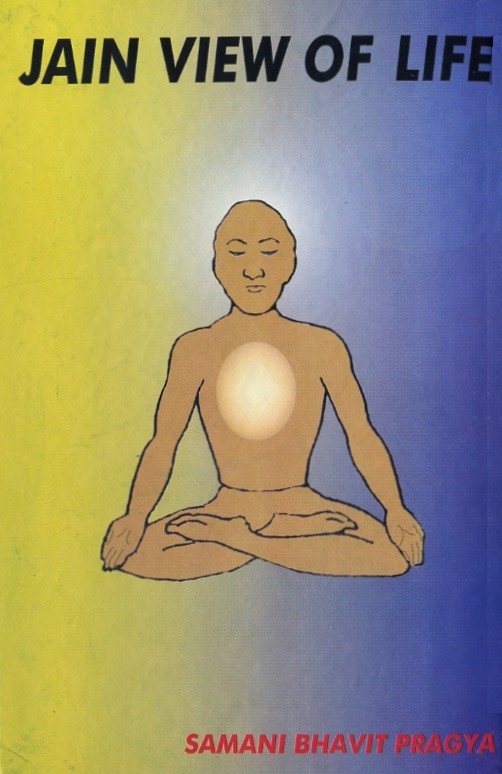Preface
We are living in an era of science. Science and technology have worked many marvels and have greatly improved living standards of vast numbers of people in the world. The entire world seems to achieve materialistic comforts and luxuries. Excessive production and consumption of goods are crossing limits. As a result, the world faces a greater danger from the perforation of the ozone layer than from a nuclear explosion. Today, mankind is standing at the edge of untimely destruction. Man is endangered by his own expertness. Violence is prevalent all over the world, whether it is between nations, within societies or inside the individual human beings itself. If science remains cut off from religion, it causes for a mankind dissatisfaction, unhappiness and disquiet. That is why, it is needed that man should be inspired with healthy ideas, delightful mind and pure feelings. With this point in view, I prepared a series of articles regarding the spiritual aspects of life within the very practical and pragmatic principles of Jainism. Its aim is to lead human beings to adopt a balanced view of life and a healthy perspective of their situation therein. That is why various practices pertaining to inwardness are stressed.
India is a land of saints and seers. There have been saints and rishis for ages in the past and in the present too. All great souls devote their attention to the development of mankind. Ganadhipati Gurudeva Tulsi and Acharya mahapragya have launched a three dimensional program called Anuvrata, preksha Dhyana and science of living. In first section I have discussed this three dimensional program. Anuvrat means a voluntary acceptance of values and principles. Anu means the ATOM, i.e. the smallest particle and vrat means vow which means self-imposed limit (maryada). Unless man practises ideas and principles in daily life, he can not become a good human being. Anuvrat helps an individual to adopt the values in his day to day behaviour. It provides a concrete shape to a society formed on the basis of harmonious relationships.
The basis of Anuvrat sadhana is preksha Dhyana. The aim of preksha Dhyana is purification of mind. Only in a purified state of mind lies the possibility of existence of knowledge and philosophy. As long as Person's thought process is governed by prejudices, likes and dislikes, his thoughts can not be compatible to any knowledge or philosophy. Anuvrat sadhana helps a man to bring about a change in internal world. Meditation is important to sustain a person in anuvrat sadhana.
Preksha Dhyana is a modern expression of a centuries old technique, which was discovered by Acharya mahapragya through untiring efforts and experimental processes over a period of twenty years. Preksha Dhyana is a concrete step to be free from tension and stress, sorrow and misery and prejudice. With the help of this technique man will be able to lead each moment peacefully, productively and happily.
Science of living (Jeevan Vigyan) is a new technique of living and a novel experiment in the education. It is the basis of a healthy social set up. It is the science of leading life in a restrained manner. Modern educational system lays more stress on knowledge and less on practical methods. Keeping this fact in mind, theoretical and practical training are stressed in course of science of living. Various practices like sound, ogasana, breathing, relaxation, contemplation etc are included in practical training of science of living. Jeevan Vigyan is the training of a method of leading life which is conducive to physical, mental, intellectual and emotional development of the student. Besides these, other articles also give right direction to person how to have healthy perspective of life in all circumstances.
In second section, the principles non-violence, non possession and non-absolutism of Lord Mahavira have been discussed. The teachings of Lord Mahavira illuminate for mankind a path of non-violence, non-possessiveness and open-mindedness, peace and happiness which is the most valuable corrective to the present trends in the world. Jainism due to unique complete system with all essential elements such as ontology, metaphysics, philosophy, epistemology, mythology, ethics, rituals, festivals and fairs have become important role for leading a lifestyle in an appropriate way.
In third section, I have tried to describe ten factors of religion which are prevalent in Jain scriptures namely forgiveness, liberation, sincerity, tenderheartedness, lightness, truth, restraint, renunciation, celibacy. These ten qualities of the religion are boon for leading peaceful, joyful and energetic life.
In forth and fifth section, the importance of yogasana and pranayama are stated. The root of yogasana is yuj. The word yuj in Sanskrit means to join. The English word yoke has a similar meaning with the same Indo - European source. As yogi gets in to harness, he yokes up the body and mind to take spiritual flight. Therefore, yogasana is compulsory for a>l ages. It does not mean only moving hands, feet, and body up or down. Nor are they means to get rid of diseases. Basically asanas contain in them the seeds of spiritual development. Yogasana is the solid basis for mental and spiritual development. All round exercise strengthens the muscles of the body and changes the secretions of endocrine glands. It helps in transforming emotions and habits of the individual.
Yogasana tones up the blood circulation, digestion, execretion and respiration. It drives away diseases, lessens fat, adds to one's beauty and brings success. These are only formal benefits. Without mastering the method of yogasana one can not be successful in any sadhana. The ultimate $im of yogasana is to train the body for sadhana. Spiritual development with transformation of habits and purity of mind are its main objects. The secondary benefit is to keep the muscles and limbs of the body active and healthy. If body machine is kept in function through yogasana, it works in a right way.
With yogasana, pranayama also provides a concrete foundation to enter in to the world of self realization. Various applications of pranayama increases the faculty of concentration, working capacity and many capabilities. Yogasana and pranayama are the best system of physical exercise. They also help in developing mental concentration, regulating emotions and making life happy, peaceful and balanced. Both are a boon for leading energetic, joyful and blissful life.
1 hope that "Jain view of life" will kindle enthusiasm in the hearts of readers and help lead them from untruth to truth, from darkness to light and from death to immortality and encourage them to do yogasana and pranayama.
My whole and heartily gratitude goes to the late Ganadhipati Gurudeva tulsi, His Holiness Acharya Mahapragya and My Majesty Yuvacharya Mahashramanji and Mahashramaniji. They have been guiding me in preparing the constructive work. They have bestowed inspiration to be constructive. Due to their blessings, I have had the opportunity to visit Jain Vishva Bharati Center in orlando as well as other cities in the United States and have received encouragement and motivation to be productive through this Jain view of life. I extend my appreciation to my friends samani Vineet Pragya, samani Vipul Pragya, Steve, Cyndi, Peter, Effie for their encouragement and support. I would like to thank Niyojikaji who inspired me and special regard for the untiring efforts of Fred in transcribing and editing Jain view of life.
I would like to express my sincere gratitude to Prof. Musafir Singh who has been a source of inspiration for improvment and suggestion for the title of the book. I also thank Dr. Chinubhai Nayak, Dr. Kumarpal Desai, Dr. Jay Sanghvi for sparing their valuable time for reading the entire manuscript.
I acknowledge my gratitude to those who have helped me directly or indirectly, In the completion of this work. I wish I shall be devoted in the ocean of conduct and knowledge from heart and soul.
Talod, Gujarat
9/5/2000
Samani Bhavit Pragya
 Samani Bhavit Pragya
Samani Bhavit Pragya
